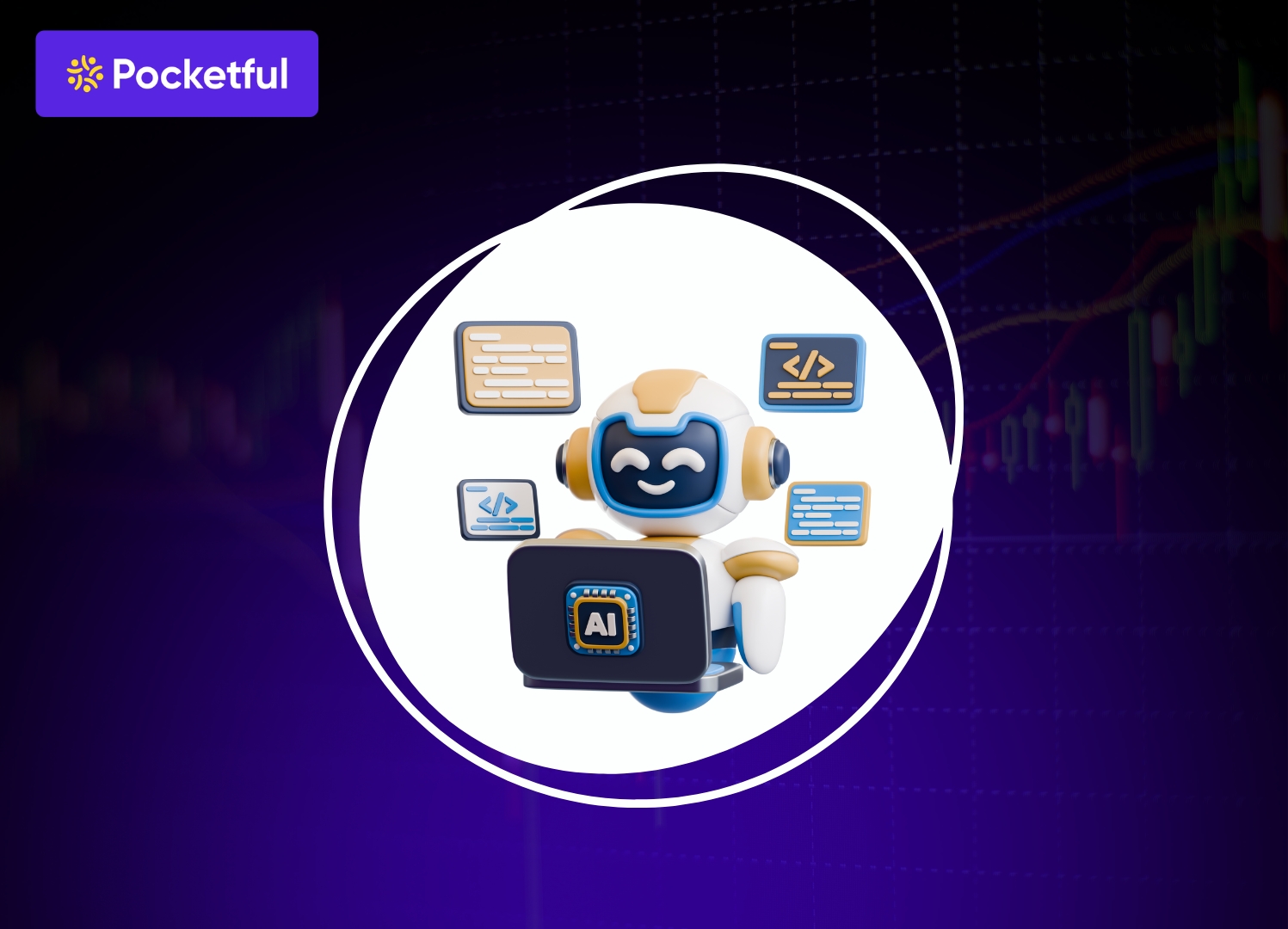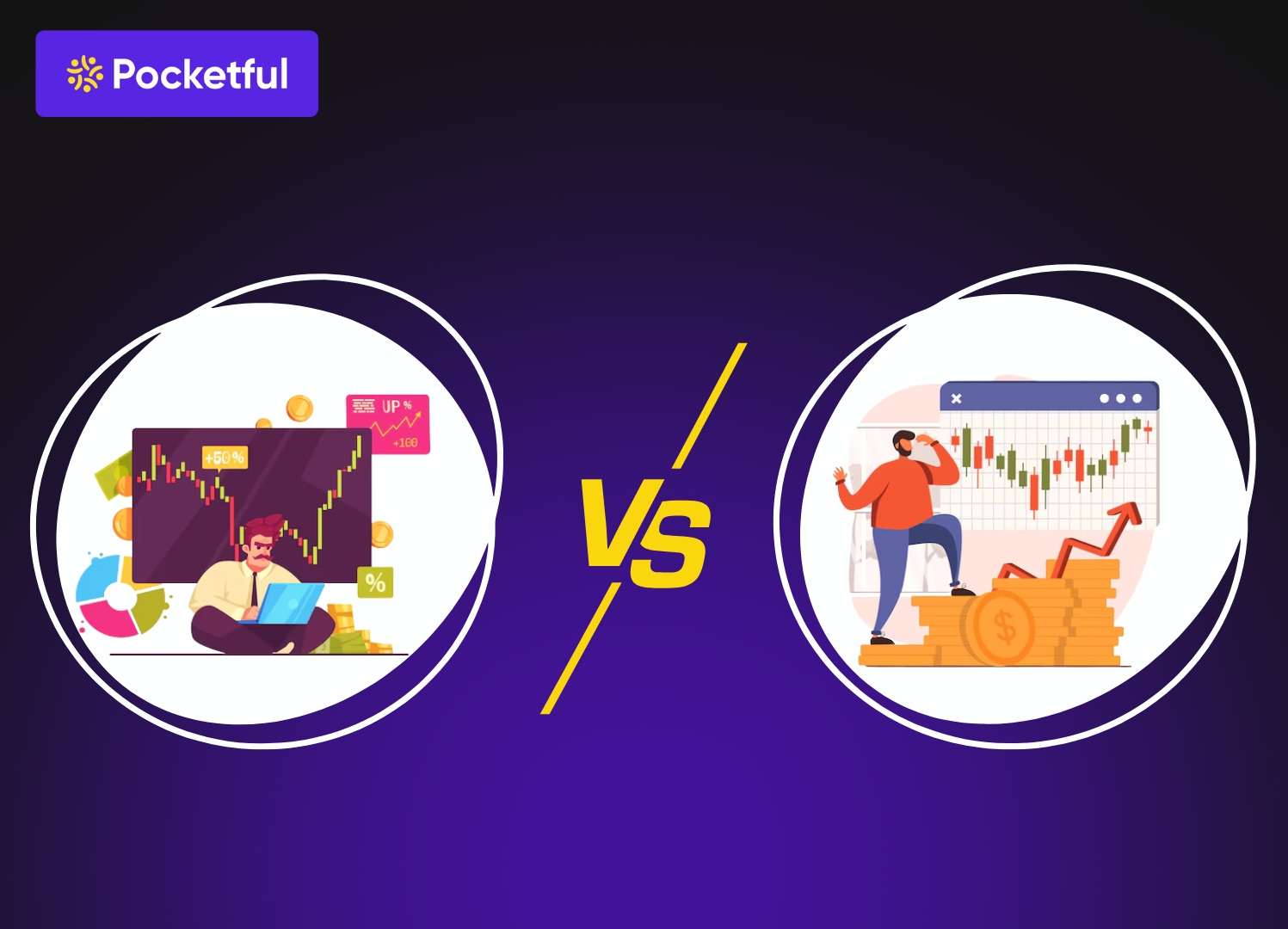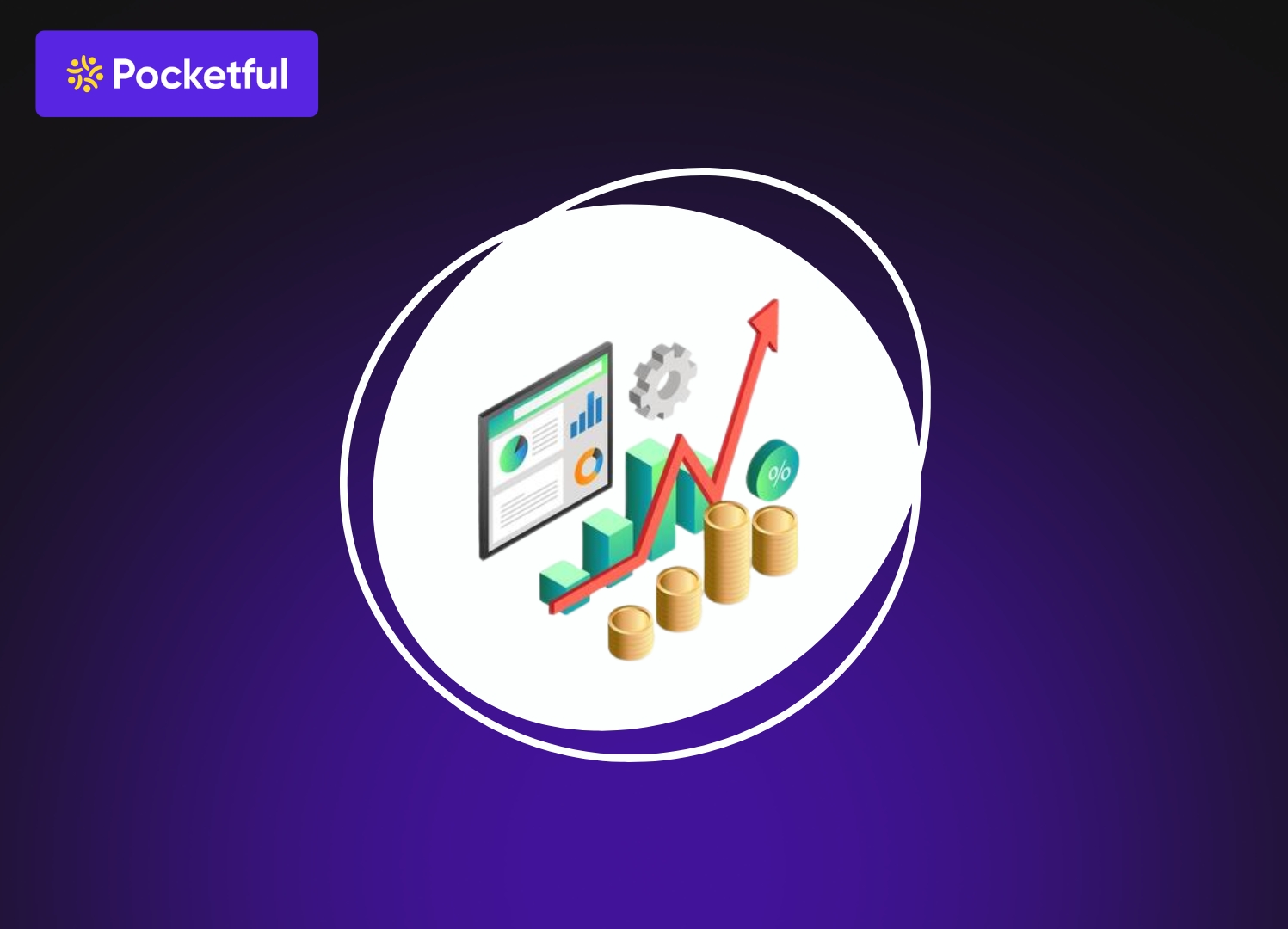Today, algorithmic trading in India is growing faster than ever. According to recent data from 2025, approximately 57% of equity cash segment trading and nearly 70% of derivatives trading is now conducted through algo systems, thanks to the readily available broker APIs, automation tools, and AI-driven strategies. Programming languages are the backbone of this automation; they tell computers how to read data, when to trade, and how to execute strategies quickly and accurately. In this blog, we’ll explore the most reliable and practical programming languages for algo trading in 2025 and their benefits.
Best Programming Languages for Algo Trading in 2025
| Programming Language | Speed / Latency | Data Handling | Best Use Case |
|---|---|---|---|
| Python | Medium | Excellent | ML models, options algos, backtesting |
| C++ | Ultra-Fast | Good | HFT, execution engines |
| Java | Fast | Very Good | Large trading systems, OMS/EMS |
| JavaScript (Node.js) | Medium-Fast | Moderate | Crypto/trading bots, real-time dashboards |
| R | Slow-Medium | Excellent | Statistical & quant research |
| Julia | Fast (near C++) | Excellent | AI-quant hybrid models |
| MATLAB | Medium | Excellent | Institutional quant & risk models |
1. What is Python ?
Python is a simple, high-level programming language that is considered extremely easy to learn. Its biggest advantage is that it makes major parts of trading, such as data analysis, automation, and strategy testing, very smooth. If you’re new to algo trading, Python allows you to get started without any extra technical stress.
How does Python work in Algo Trading?
Step 1 – Creating API Access
First, you access a brokerage’s trading API (like Pocketful). This API allows your Python code to view market data and place orders.
Step 2 – Installing the SDK in Python
The broker’s SDK is installed in Python, allowing your script to easily access real-time data and call order functions.
Step 3 – Reading Market Data
The Python script fetches real-time prices, historical candles, indicators, and other market feeds. This data becomes the input for your trading strategy.
Step 4 – Writing Strategy Logic
Now, in Python, you write buy/sell rules such as moving average crossovers, RSI signals, or breakout logic. Python’s simple syntax makes this process very smooth.
Step 5 – Backtesting
Using Python, the strategy is tested on historical data to determine its effectiveness under real market conditions.
Step 6 – Running the Live Algo Bot
Once the strategy is validated, the Python bot is connected to the API and live trading begins. The bot automatically executes buy-sell orders based on your rules.
Step 7 – Performance Monitoring
Python continuously monitors the bot’s performance through log files, alerts, and dashboards, so you can view its execution at any time.
Advantages of Python
- Easy to learn even beginners can quickly create strategies.
- Fast Development writing and testing strategies is fast.
- Strong Data Handling smoothly handles ticks, candles, and indicators.
- AI/ML Integration Advanced strategies like sentiment analysis and prediction models are easily created.
Limitations of Python
- Not suitable for high-frequency trading Python is slow for strategies requiring millisecond-level speed.
- Execution Speed Limited Slower performance than compiled languages like C++ and Rust.
- Heavy Computation Load Large mathematical models have increased processing time.
2. What is C++
C++ is a high-performance, compiled programming language designed for systems where speed and precision are paramount. It is particularly used in algo trading where microsecond-level execution is required. Its memory-level control capabilities make it a favorite for traders who want ultra-fast order execution.
How Does C++ Work in Algo Trading?
Step 1 – Connection Setup to Broker API
First, the C++ application is connected to a broker’s low-latency API (for example, an API like Pocketful).
Step 2 – Processing Real-Time Market Feed
C++ reads data in raw formats, such as order-book depth, tick-by-tick feeds, and microsecond-level price changes. Its speed allows for instant data processing.
Step 3 – Applying High-Speed Strategy Logic
Strategies are now written using C++ such as arbitrage detection, liquidity-based entries, or rapid breakout logic. This logic runs in compiled form, making it extremely fast.
Step 4 – Instant Order Execution
The C++ bot places orders immediately upon signal generation. Ultra-low latency ensures optimal positioning in the order queue, reducing slippage.
Step 5 – Continuous Monitoring and Error Handling
During live market operations, the C++ system self-monitors immediately detecting delays, disconnections, or errors. Its reliability is crucial in high-frequency systems.
Strengths of C++
- Ultra-Low Latency Performance Delivers microsecond-level speeds, not milliseconds.
- Direct Memory Control Data handling and calculations become super-efficient.
- Stable Under Heavy Loads Processes high-volume market data without lag.
Limitations of C++
- Stiff Learning Curve Difficult for beginners to write and maintain.
- Long Development Time Strategies don’t test quickly; every change requires compilation.
- Not Beginner-Friendly Not a practical first choice for traders new to algo trading.
3. What is Java?
Java is a robust, object-oriented programming language designed for large, continuously running systems. Financial institutions and trading firms prefer it because it can handle long-running applications without interruption.
How Does Java Work in Algo Trading?
Step 1 – Establishing a Broker API Connection
A Java application is connected to a broker’s trading API (for example, an API like Pocketful). Java’s network layer is stable, so connection interruptions are minimal.
Step 2 – Multi-Threaded Data Handling
Java can handle multiple tasks in parallel such as reading price updates, performing indicator calculations, and generating signals.
Step 3 – Building a Structured Strategy Logic
In Java, strategies can be easily divided into modules such as a signal engine, risk management, and an order engine making even complex strategies clean and maintainable.
Step 4 – Automated Order Execution
When a Java application generates a signal, it immediately sends an order through an API. Its execution is faster than Python and slightly slower than C++, but stability is its greatest strength.
Step 5 – Monitoring, Logging, and Recovery
Java-based bots keep detailed logs and recover automatically in case of errors.
Strengths of Java
- High Stability Long-running trading bots run smoothly without crashing.
- Strong Multi Threading Can manage multiple signals, data streams, and tasks simultaneously.
- Better Performance than Python Execution speed is balanced and more consistent.
Limitations of Java
- Verbose syntax Code takes longer to write and update than Python.
- Not Ideal for Extreme Low Latency Not suitable for HFT or microsecond trading.
- A bit heavy for beginners Logic takes time to understand and implement.
4. What is JavaScript ?
JavaScript is a lightweight and event-driven programming language originally designed for web development, but it is now rapidly being adopted in algorithmic trading especially crypto and real-time data-based strategies. With the advent of Node.js, JavaScript can also handle server-side tasks with great speed and stability.
How Does JavaScript Work in Algo Trading?
Step 1 – Setting Up an API Connection
First, a JavaScript/Node.js application connects to a broker or crypto exchange’s API (such as the Pocketful API example).
Step 2 – Reading WebSocket-Based Live Data
Node.js handles WebSocket data very smoothly. This is especially useful for crypto traders because crypto markets are active.
Step 3 – Real-Time Updating of Strategy Logic
JavaScript can react instantly to real-time market movements. As soon as a price threshold is hit or an indicator is updated, the Node.js bot can execute logic immediately.
Step 4 – Automated Order Execution
As soon as a signal is generated, the JavaScript bot fires an API to place an order. Asynchronous execution prevents any processes from being blocked, improving overall system speed.
Step 5 – Creating Live Monitoring Dashboards
The biggest advantage of JavaScript is that you can also create real-time dashboards with the same language charts, P&L panels, alerts all within a single ecosystem.
Strengths of JavaScript
- Excellent at Real-Time Data Handling WebSocket support makes it ideal for 24/7 markets.
- Async Architecture No task blocking, responsiveness remains high.
- Perfect for Crypto Trading Most exchanges offer JS-friendly APIs.
Limitations of JavaScript
- Less Quant Libraries Not as rich a quant ecosystem as Python.
- Weak at Heavy Computation Not ideal for complex mathematical calculations.
- Less Use in Indian Equity Algos Equity traders in India still prefer Python.
5. What is R?
R is a statistical computing language specifically designed for data analysis, forecasting, and quantitative modeling. Indian algo traders choose it when their strategies rely on heavy statistical calculations, time-series forecasting, or portfolio optimization.
How Does R Work in Algo Trading?
Step 1 – Data Import and Cleaning
First, you import market data (CSV, API, or database formats) into R. R easily cleans and structures statistical datasets, making it easy to begin modeling.
Step 2 – Creating Quantitative Indicators and Models
R’s greatest strength is its ability to build complex statistical models such as ARIMA, GARCH, regression models, and volatility forecasting very accurately.
Step 3 – Creating Strategy Logic
Now, buy-sell rules are defined based on statistical output. For example, mean-reversion signals, probability-based entries, or multi-factor strategies.
Step 4 – Backtesting and Performance Analysis
Packages like quantmod, TTR, and PerformanceAnalytics in R allow you to test the strategy on historical data. This phase is critical for research-heavy strategies.
Step 5 – Live Trading Integration
Once the strategy is validated, you can connect it to a broker API (for example, the Pocketful API) and run it live. However, R is slightly less flexible than Python and Java for live execution.
Strengths of R
- Strongest in Statistical Analysis Unmatched accuracy in forecasting, modeling, and quantitative research.
- Time-Series Tools Ready-Made Can efficiently analyze Indian equities, derivatives, and commodities.
- Research-Grade Backtesting Performance analytics and risk analysis are very advanced.
Limitations of R
- Less Flexibility in Live Execution Not as smooth as Python for automation.
- Speed Average Execution in fast-moving markets is not as steady as Python or Java.
- Learning Curve Medium Takes time to learn if you don’t have a statistical background.
6. What is Julia?
Julia is a modern, high-performance programming language designed specifically for scientific computing, numerical analysis, and complex mathematical modeling. Its most distinctive feature is that it looks as simple as Python, but is very close to C++ in speed. It is becoming popular among Indian quant traders in 2025 because advanced strategies such as optimization-heavy models and AI-driven forecasting run faster and more accurately in Julia.
How does Julia work in Algo Trading?
Step 1 – Data Loading and Pre-Processing
Julia loads large datasets quickly and applies mathematical transformations without delay. This creates the perfect foundation for complex algo models.
Step 2 – Quantitative & Mathematical Modeling
Julia’s powerful numerical libraries process optimization, derivative calculations, risk modeling, and matrix-heavy computations with remarkable ease.
Step 3 – Developing Strategy Logic
If the strategy involves probability-based entries, factor modeling, or AI-powered predictions, Julia’s speed and numerical accuracy make it even stronger.
Step 4 – Backtesting with High-Speed Execution
Julia runs backtests in parallel on multi-core processing, allowing even heavy models to be evaluated in less time.
Step 5 – Live Execution (API Example)
You can run a validated strategy live by connecting to a broker API (example: Pocketful API). Although Julia’s live trading ecosystem in India is still small, advanced traders are rapidly adopting it.
Strengths of Julia
- Near C++ Level Performance Heavy mathematical strategies run lightning-fast.
- Designed for Scientific & Quant Computing Complex calculations are Julia’s specialty.
- AI/ML Integration Efficient Deep learning and forecasting models run smoothly.
- Easy Syntax for Quant Developers As easy to write as Python but faster.
Limitations of Julia
- Limited Adoption in the Indian Market Not yet as widespread as Python.
- Less Broker Integrations Availability of API libraries is still developing.
- Small Community Size Beginners don’t get much help or ready-made solutions.
7. What is MATLAB?
MATLAB is a premium, high-level programming environment designed for scientific calculations, simulations, and complex quantitative modeling. It is used by Indian financial institutions, research teams, and professional quants, especially where trading decisions are based on deep mathematical models, derivative pricing, or risk analytics.
How Does MATLAB Work in Algo Trading?
Step 1 – Market Data Import and Cleaning
MATLAB converts large datasets into a clean and structured format without any manual formatting. This creates a high-quality base for quantitative models.
Step 2 – Building Mathematical & Quant Models
MATLAB’s library processes derivative pricing, volatility modeling, optimization algorithms, neural networks, and statistical forecasting with very high accuracy.
Step 3 – Creating Strategy Logic
Buy-sell logic is developed based on research output. Complex strategies can be written modularly in MATLAB, making them easy to maintain and modify.
Step 4 – Backtesting & Scenario Simulation
MATLAB’s simulation capabilities are very advanced. You can test the impact of different volatility environments, risk levels, and market shocks, which is critical for institutional-grade strategies.
Step 5 – Live Trading
MATLAB can be connected to a broker’s API , but it is not as flexible as Python or Java for live execution. Therefore, it is primarily used in research-to-production workflows.
Strengths of MATLAB
- Advanced Mathematical Accuracy Industry-standard for deep quantitative models and derivative pricing.
- Powerful Simulation Engine Unmatched capability in risk modeling and stress testing.
- High Reliability for Research Perfect environment for academic and institutional traders.
Limitations of MATLAB
- Expensive Licensing Costly for individual retail traders.
- Limited Live Algo Automation Real-time execution is not as flexible as Python.
- Not Beginner Friendly It takes effort to learn without a research background.
Read Also: Best Algo Trading Platform in India
Key Factors to Compare Before Selecting a Language
- Speed and Latency Efficiency : In algo trading, trades are executed at the millisecond level. Therefore, it’s important to choose a language that runs fast and offers low-latency execution. In high-frequency or fast-moving markets, speed directly impacts your returns.
- Data Handling and Processing Power : In 2025, strategies are based on tick data, options chains, and real-time feeds. A language is only as useful as it can efficiently process large data. Smooth data handling leads to more accurate models.
- Availability of Quant Libraries and Tools : Strong libraries are the backbone of any trading system. Platforms like Python offer ready-made tools for backtesting, charting, optimization, and ML, while C++ and Rust offer the best tools for performance-heavy tasks. A strong ecosystem significantly reduces development time.
- Learning Curve and Practical Usability : A language is only as effective as the speed with which you can learn and develop a strategy. Python is easier for beginners, while C++ and Rust are more technical. Your comfort level and learning speed also play a role in the decision.
- Availability of Community Support and Resources : A strong community provides quick assistance with coding issues, bugs, and strategy development. Updated documentation and tutorials make learning easier, especially for new traders.
- AI/ML Framework Compatibility : Machine learning and deep learning strategies are rapidly gaining popularity in modern trading. It’s important to choose a language that can easily work with frameworks like TensorFlow, PyTorch, and scikit-learn. This gives your strategy the smartest edge.
- Deployment Flexibility and Server Support : Algo bots require cloud, VPS, or dedicated servers to run 24/7. The more flexible the language, the easier it is to deploy and maintain the system. This improves both reliability and uptime.
Conclusion
The right language for algo trading is one that allows you to work comfortably and automate your strategy without hassle. For some, speed matters, for others, ease of coding. Therefore, the “best” language is different for everyone. Simply choose a language that you can learn consistently and use with confidence this will be the most practical and correct decision.
Frequently Asked Questions (FAQs)
Which programming language is best for beginners in algo trading?
If you’re just starting out, Python is the easiest and most practical option.
Is C++ needed for high-frequency trading?
Yes, speed is crucial in HFT, so C++ is considered the best.
Can JavaScript be used for stock market algos?
Possible, but it works best for crypto and real-time data bots.
Is R useful for live algo trading?
R can run live, but its strength lies more in research and statistical models.
Is MATLAB suitable for normal retail traders?
MATLAB is a bit technical, so it may not be as easy for retail traders.












